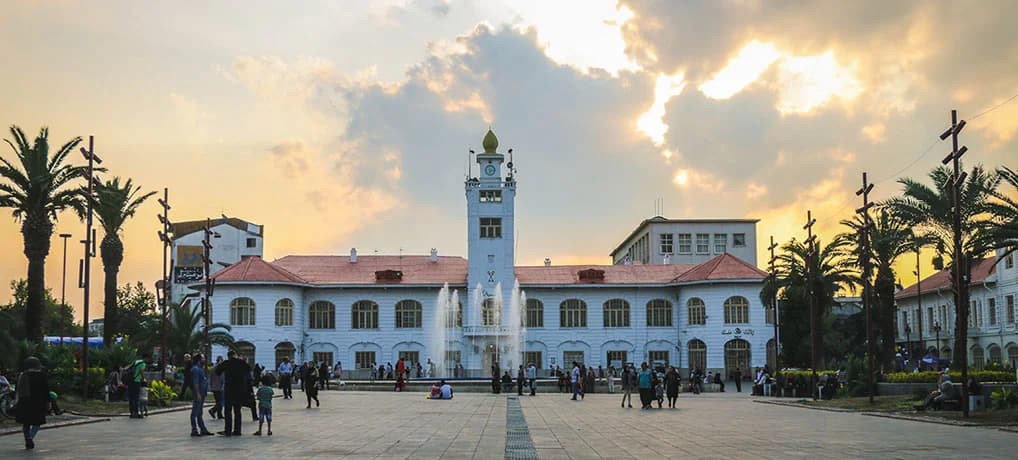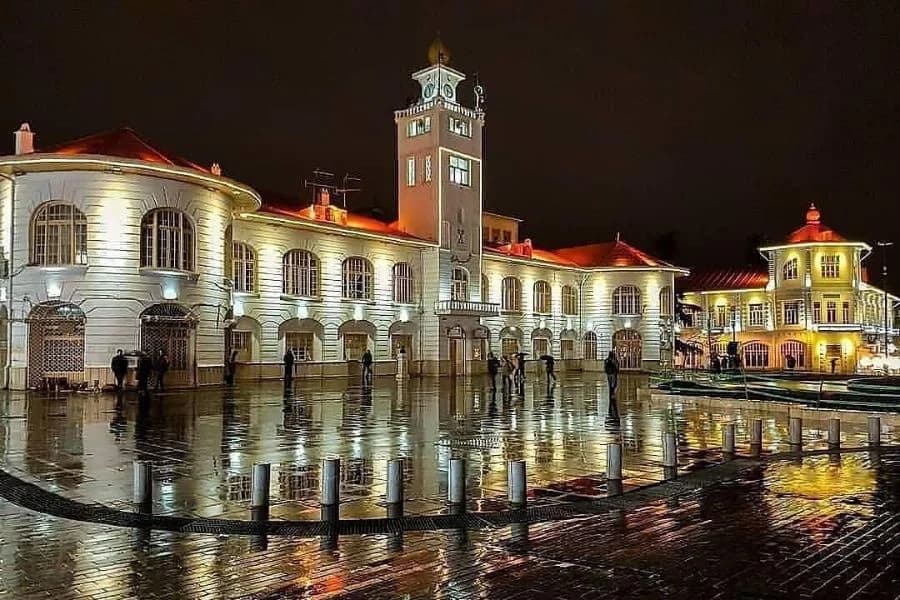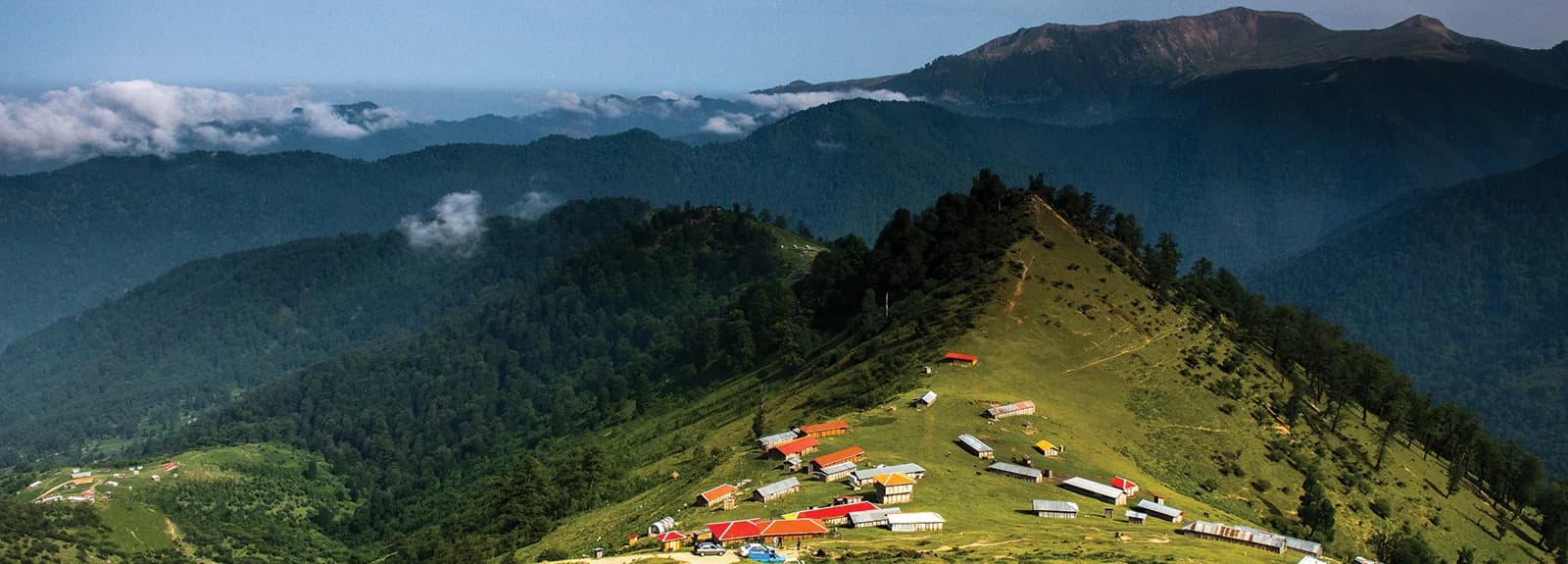Rasht, also known as the City of Rain, is located in the north of Iran, at the shore of the Caspian Sea. Rasht is the capital city of Gilan province and the largest and most populated city located on the coast of the Caspian Sea. Known as the city of silver rains, this city is one of the most important rice and vegetable producers in the country due to its humid and rainy climate. The people of Rasht are among the most energetic and kind people in Iran and their language is Gilaki.
Rasht welcomes between 12 and 15 million visitors every year and is one of the most popular holiday destinations among Iranians. Rasht offers a huge range of delicious foods, made mostly of vegetables, garlic, chicken, and grenadine which has earned the nickname “Food City”. Rasht has also found international recognition as one of UNESCO’s creative cities of gastronomy. So, if you are a food traveler, Rasht must be your first spot to investigate in Iran. For adventure seekers and nature enthusiasts, Rasht also offers many colorful natural sites.

A Historical Gateway to Europe
This city was at the peak of importance along with the long history of this country. During the Sassanid era (650 CE), Rasht was the main city, and during the Safavid era (16th century) it was the main transit spot. By its location on the transportation east-to-west and south-to-north paths, Rasht was a convenient place to transit goods. Besides that, Rasht was an agricultural center for bearing rice, tea, and cocoon.
Historically, Rasht was a major transport and business center which connected Iran to Russia and Europe, and because of this was known as the “Gate of Europe”. The city has a history that goes back to the 13th century but its modern history dates back to the Safavid era during which Rasht was a major silk trade center with numerous textile workshops. The Mediterranean climate makes Rasht have warm summers and cool winters.

About the people of Rasht
Among Iranians, People in Rasht are famous for being broad-minded. Many of the first historical social and cultural events took place in this city. Girls in Rasht were the first ones who attended public schools. The first Iranian modern newspaper was published in Rasht by the name Nasim-e Shomal after the constitutional revolution. The first Iranian bank opened its first branch in Rasht after Tehran. Russian, Ottoman, and British governments chose Rasht to have their embassies during the World Wars. The first fire station, 24/7 pharmacy (Karoon Pharmacy), national library, and classical theatre were also opened in Rasht.
The Creative City of Gastronomy
UNESCO called Rasht the Creative City of Gastronomy in 2005 for its rich culinary culture. The northern culinary culture is marked by the subtle art of combining different ingredients perfectly together. The diversity of vegetation, poultry, and fish spices provided a large range of ingredients that locals used while following their ancestors' exclusive recipes and utensils for preparing numerous mouthwatering meals. The list of ethnic delicacies of Gilan is huge. More than 170 unique dishes are cooked in this northern province of Iran. Most of these typical foods are vegetable-stock, and you can taste garlic, olive, and pomegranate molasses almost in every dish.

Rasht Souvenirs
Olive
Verjuice
Orange Jam
Cucumber
Pumpkin Jam
Halva brain
Varieties of birds and fish
Pomegranate paste
Orange flower jam
Many kinds of pickles
Fooman Muffins
Lahijan Muffins
Historical Attractions of Rasht
Shahrdari Square
Shahrdari Square is the beating heart of Rasht and one of its most important attractions. This square is surrounded by several historical monuments such as a clock tower, the post building, the historic Iran hotel, and the city hall. Shahrdari Square is a popular choice for spending the evening or strolling around and enjoying the delightful weather.

Rasht Grand Bazaar
Unlike most traditional bazaars in Iran, Rasht Grand Bazaar is an open-air one. This bazaar contains 14 caravanserais dating back to the Qajar and early Pahlavi era. Rasht Grand Bazaar has long been popular among locals and visitors and is a suitable place for buying souvenirs, local food, etc.
Natural Attractions of Rasht
Caspian Sea
The Caspian Sea is the largest natural lake in the world. It has made the northern cities of Iran popular holiday destinations, especially among citizens of Tehran. The beaches now offer a variety of recreational options in addition to swimming, attracting many visitors daily. The beautiful Caspian Sea is a must-see when traveling to Rasht and a great place to enjoy sunny days.

Anzali Lagoon
Located in Anzali port town, Anzali lagoon is one of the most significant and unique lagoons in Iran. This spectacular lagoon is famous for its beautiful Indian lotuses seen in spring. The amazing Anzali lagoon is also the natural habitat of many fish species and migrating birds making it more special. Activities such as kayaking, boat riding, and fishing are available in this magnificent lagoon.
Conclusion
Rasht, the capital of Gilan province in north-central Iran, is a city of significant historical and cultural value. Known as the “City of Rain”, Rasht is the largest city on Iran’s Caspian Sea coast. Its unique location between the coast and the mountains gives it a rainy, humid subtropical climate, contrasting with the mostly arid regions of Iran. The city’s rich history dates back to the 13th century, with its modern history rooted in the Safavid era when Rasht was a major silk trade center. Today, Rasht is recognized as a creative gastronomy city under the supervision of UNESCO, reflecting its vibrant food culture. Rasht serves as a major trade center between Caucasia, Russia, and Iran, using the port of Bandar-e Anzali.
Read more: